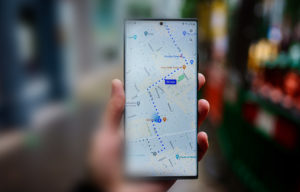Believe it or not, nearly half of small businesses still don’t have a website.
How is this possible, in a world where people increasingly rely on the internet to make purchasing decisions?
Many small businesses think having a website is more complicated than it really is.
Not only is it necessary to have a website, but it’s also important to have a good website design. Here are 9 principles to follow when designing a website.
1. Purpose
The number one principle of website design is that a site needs to have a purpose that fulfills a need for the user. Each page should be made intentionally and with a clear understanding of what it offers you audience.
There are a number of different reasons you might have a website. Whether you’re selling a product or building your reputation through expertise, you want the design and content of your site to reflect your purpose.
2. Keep it Simple

Making a website is exciting, but you should remember that website design is just as much about what you don’t put in than it is about what you do include. You want your page to be fresh and clean looking, not overwhelming and busy. The more complex you make you site, the more likely a user is going to get confused and bounce off it.
3. Consistency Is Key
One of the key principles of how to design a good looking website is to be consistent in every aspect of your design elements. This is something you’ll want to deliberately plan out ahead of time, not just wing it when the time comes.
You’ll want your fonts, button styles, headings, sub-headings, and font sizes to be consistent across the whole site. This adds cohesion and makes you look way more professional.
4. Readability and Typography

Remember, the text on your site is an element of your design as well. Keep your typography easy to read and visually appealing. Make sure to also include SEO tactics to improve your search rankings.
When adding text to a site, you want to make it as easy to read as possible. Make sure to leave plenty of white space around the text, and keep your paragraphs and sentences short.
5. Mobile-Friendly
It is increasingly common for people to browse the internet on their phones and tablets rather than a computer. If you haven’t made your website mobile-friendly, you’re not doing yourself any favors.
Without mobile compatibility, users are likely to check out the site of one of your competitors that does.
6. Quick and Easy Loading

The longer it takes your site to load, the fewer people will end up seeing it. Simple as that. The average person’s patience and attention span are quite low, so you need your site to appear practically instantaneously.
Fast loading pages isn’t just important for the sake of your visitor. The length of time it takes your site to load also impacts your Google search ranking. This means that not only are people more inclined to bounce off of your clunky, slow-loading site, but they’re also less likely to even find it in the first place.
7. Imagery and Color Palette

It’s amazing how much color palette selection can impact the overall vibe of a website. Colors can evoke different emotional responses and tones for people, so you can use color to set the atmosphere of the site.
Take some time to look around at different websites and notice when the color combinations draw you in and when they repel you. When you are put off by a poor color palette, it’s difficult to even want to stay on the page. The ideal color palette will include three or four tones online.
When it comes to imagery, you want to use the power of visuals but not overdo it. Be mindful of the colors in the images and how they fit or don’t fit with your existing palette. Be deliberate about your image selection and scrutinize whether or not a specific image fits with your overall aesthetic.
8. Easy Navigation
This should be a no-brainer, but it’s actually amazing how many sites have hidden menus and cryptic navigation. When a user is on your site, they should be able to intuitively understand where the information they’re looking for lives.
The general rule of thumb is known as the “three-click-rule.” This means that a reader should be able to find what they’re looking for in three clicks.
Navigation is absolutely key to keeping visitors on your site. Confusing navigation will lead your users to give up and search elsewhere. Remember, your navigation should be consistent, simple, and intuitive.
9. Visual Hierarchy
Good website design examples will have a visual hierarchy. This means that the elements of the site are visually arranged in order of importance. The relative importance of one element compared to another is distinguished by imagery, color, size, typography, contrast, texture, white space, and style.
Having a visual hierarchy is what shows your visitors where to find the most important information.
Good Website Design: Make Your Website Functional and Easy on the Eyes
Good website design is about achieving both form and function. Of course it’s important to include all the necessary information and tell your visitors what they need to know. At the same time, if your site is visually displeasing or disorganized, you’re putting yourself at a disadvantage versus your competition.
Is it time for you to get a website or take your existing website to the next level? Are you looking for a talented website design company? Learn more about our web design and development services today!







